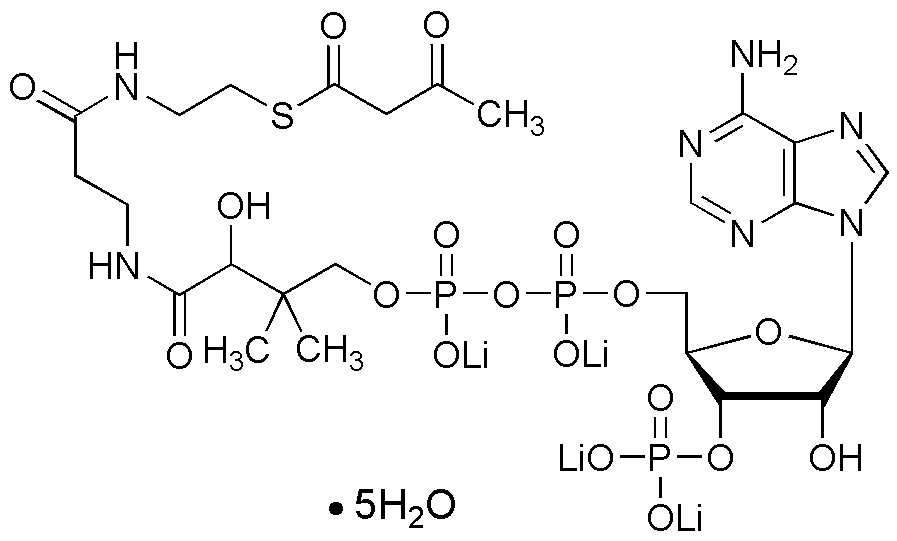Acetoacetyl coenzyme A lithium salt is widely utilized in research focused on:
- Biochemical Research: This compound plays a crucial role in metabolic studies, particularly in understanding the pathways of fatty acid synthesis and degradation.
- Pharmaceutical Development: It serves as an important intermediate in the synthesis of various pharmaceuticals, aiding in the design of drugs that target metabolic disorders.
- Biotechnology: Used in the production of biofuels, it helps in optimizing microbial fermentation processes, enhancing yield and efficiency.
- Food Industry: It can be applied in flavoring agents and food additives, contributing to the development of novel food products with improved taste profiles.
- Cosmetic Formulations: The compound is explored for its potential in skin care products, offering benefits such as improved skin hydration and texture.
General Information
Properties
Safety and Regulations
Applications
Acetoacetyl coenzyme A lithium salt is widely utilized in research focused on:
- Biochemical Research: This compound plays a crucial role in metabolic studies, particularly in understanding the pathways of fatty acid synthesis and degradation.
- Pharmaceutical Development: It serves as an important intermediate in the synthesis of various pharmaceuticals, aiding in the design of drugs that target metabolic disorders.
- Biotechnology: Used in the production of biofuels, it helps in optimizing microbial fermentation processes, enhancing yield and efficiency.
- Food Industry: It can be applied in flavoring agents and food additives, contributing to the development of novel food products with improved taste profiles.
- Cosmetic Formulations: The compound is explored for its potential in skin care products, offering benefits such as improved skin hydration and texture.
Documents
Safety Data Sheets (SDS)
The SDS provides comprehensive safety information on handling, storage, and disposal of the product.
Product Specification (PS)
The PS provides a comprehensive breakdown of the product’s properties, including chemical composition, physical state, purity, and storage requirements. It also details acceptable quality ranges and the product's intended applications.
Certificates of Analysis (COA)
Search for Certificates of Analysis (COA) by entering the products Lot Number. Lot and Batch Numbers can be found on a product’s label following the words ‘Lot’ or ‘Batch’.
*Catalog Number
*Lot Number
Certificates Of Origin (COO)
This COO confirms the country where the product was manufactured, and also details the materials and components used in it and whether it is derived from natural, synthetic, or other specific sources. This certificate may be required for customs, trade, and regulatory compliance.
*Catalog Number
*Lot Number
Safety Data Sheets (SDS)
The SDS provides comprehensive safety information on handling, storage, and disposal of the product.
DownloadProduct Specification (PS)
The PS provides a comprehensive breakdown of the product’s properties, including chemical composition, physical state, purity, and storage requirements. It also details acceptable quality ranges and the product's intended applications.
DownloadCertificates of Analysis (COA)
Search for Certificates of Analysis (COA) by entering the products Lot Number. Lot and Batch Numbers can be found on a product’s label following the words ‘Lot’ or ‘Batch’.
*Catalog Number
*Lot Number
Certificates Of Origin (COO)
This COO confirms the country where the product was manufactured, and also details the materials and components used in it and whether it is derived from natural, synthetic, or other specific sources. This certificate may be required for customs, trade, and regulatory compliance.


